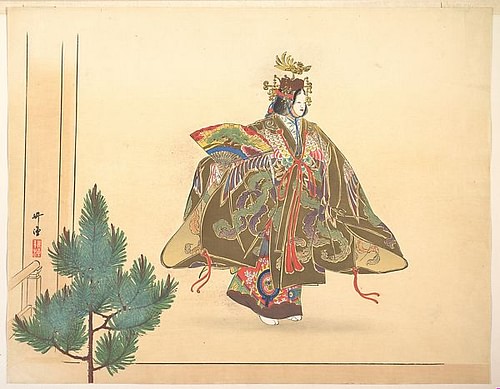

Non-paddy farmland share the terraces and lower slopes and are planted with wheat and barley in the autumn and with sweet potatoes, vegetables, and dry rice in the summer.

Rice paddies occupy most of the countryside, whether on the alluvial plains, the terraced slopes, or wetlands and coastal bays. However, the land is intensively cultivated. The 49,000 square kilometres (19,000 sq mi) under cultivation constituted just 13.2% of the total land area in 1988. The most striking feature of Japanese agriculture is the shortage of farmland. In 2018, Japan produced 9.7 million tons of rice (13th largest producer in the world), 3.6 million tons of sugar beet (used to produce sugar and ethanol), 1.2 million tons of sugarcane (used to produce sugar and ethanol), 208 thousand tons of persimmon (4th largest producer in the world), 2.7 million tons of assorted vegetables, 3 million tons of potatoes, 1.3 million tons of cabbage, 1.6 million tons of onion, 773 thousand tons of tangerine, 756 thousand tons of apple, 764 thousand tons of wheat, 724 thousand tons of tomato, 612 thousand tons of carrot, 578 thousand tons of lettuce and chicory, 550 thousand tons of cucumber, 317 thousand tons of watermelon, 300 thousand tons of eggplant, 258 thousand tons of pear, 226 thousand tons of spinach, 211 thousand tons of soy, 197 thousand tons of pumpkin, 174 thousand tons of barley, 174 thousand tons of grape, 164 thousand tons of cauliflower and broccoli, 164 thousand tons of yam, 163 thousand tons of strawberry, 143 thousand tons of melon, 141 thousand tons of taro, 140 thousand tons of pepper, 113 thousand tons of peach, 112 thousand tons of apricot, in addition to smaller productions of other agricultural products. Government data from 2011 showed women heading more than three-quarters of new agribusiness ventures. Historically and today, women farmers outnumber male farmers. The rate of decrease slowed in the late 1970s and 1980s, but the average age of farmers rose to 51 years by 1980, twelve years older than the average industrial employee. As more and more farm families turned to nonfarming activities, the farm population declined (down from 4.9 million in 1975 to 4.8 million in 1988). Three types of farm households developed: those engaging exclusively in agriculture (14.5% of the 4.2 million farm households in 1988, down from 21.5% in 1965) those deriving more than half their income from the farm (14.2% down from 36.7% in 1965) and those mainly engaged in jobs other than farming (71.3% up from 41.8% in 1965). Their output swelled to over 14 million metric tons in the late 1960s, a direct result of greater cultivated area and increased yield per unit area, owing to improved cultivation techniques. Farmers became mass producers of rice, even turning their own vegetable gardens into rice fields. They were attracted to the government's food control policy under which high rice prices were guaranteed and farmers were encouraged to increase the output of any crops of their own choice. Japan's economic boom that began in the 1950s left farmers far behind in both income and agricultural technology. The importance of agriculture in the national economy later continued its rapid decline, with the share of net agricultural production in GNP finally reduced between 19 from 4.1% to 3% In the late 1980s, 85.5% of Japan's farmers were also engaged in occupations outside farming, and most of these part-time farmers earned most of their income from nonfarming activities. Employment in agriculture declined in the prewar period, but the sector was still the largest employer (about 50% of the work force) by the end of World War II. In the late 19th century ( Meiji period), these sectors had accounted for more than 80% of employment.

Only 20% of Japan's land is suitable for cultivation, and the agricultural economy is highly subsidized.Īgriculture, forestry, and fishing dominated the Japanese economy until the 1940s, but thereafter declined into relative unimportance (see Agriculture in the Empire of Japan).

Agriculture, farming, and fishing (Japanese: 農林水産, nōrinsuisan) form the primary sector of industry of the Japanese economy together with the Japanese mining industry, but together they account for only 1.3% of gross national product.


 0 kommentar(er)
0 kommentar(er)
